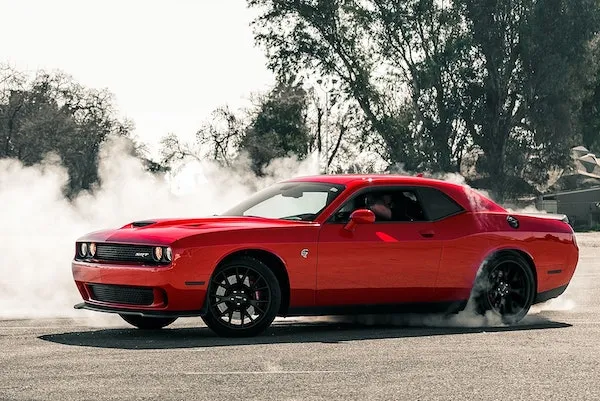Does Back to the Future hoverboard exist?

The hoverboard from the iconic 1989 film Back to the Future Part II has left a lasting impression on the world. Fans have long dreamed of a future where flying skateboards glide above the ground just like in the movie. But does the Back to the Future hoverboard really exist? Let’s explore the origin, evolution, and current state of hoverboard technology to answer that question.
The Origin of the Hoverboard Concept
In Back to the Future Part II, Marty McFly rides a hoverboard while escaping from trouble in a futuristic 2015. The hoverboard was depicted as a skateboard-like device that floated several inches above the ground. This vision sparked the imagination of millions, leading to a cultural phenomenon surrounding the possibility of hoverboards becoming a reality.
While the movie popularized the concept, the idea of levitating vehicles or objects predates it. Scientists and inventors have long been fascinated by anti-gravity technology and magnetic levitation. However, at the time the film was made, a hoverboard was pure fiction, created with visual effects and props.
Has the Hoverboard Been Invented?
Though the movie’s hoverboard doesn’t exist in the form seen on screen, there have been notable advancements in hover technology. Some companies have worked on devices that resemble the hoverboard from the film. Here are the key developments:
- Lexus Hoverboard: In 2015, Lexus revealed a real hoverboard that uses magnetic levitation. This board, however, can only work on specially designed metal tracks. It hovers using superconductors cooled by liquid nitrogen, creating a magnetic field that allows the board to float above the surface. While impressive, it’s far from practical for everyday use.
- Hendo Hoverboard: Another notable attempt is the Hendo Hoverboard, which also relies on magnetic levitation. This device uses powerful magnets to float over a conductive surface, much like Lexus’s hoverboard. Again, the requirement of a specially designed surface limits its usability.
- Hoverbike and Drone Technology: Engineers have also experimented with drone technology to create hover vehicles. These devices use rotating blades or fans to lift off the ground, much like a drone. Although not quite the same as the Back to the Future hoverboard, these developments show progress toward personal levitating devices.
Why Don’t We Have Real Hoverboards Yet?

Despite the technological advancements, we still don’t have fully functional hoverboards like those seen in Back to the Future. The main reasons are:
- Power Supply Issues: Hoverboards would require significant amounts of energy to maintain lift and movement without wheels. Current battery technology is not efficient enough to support long periods of hovering without recharging.
- Magnetic Levitation Limitations: Devices like the Lexus hoverboard rely on magnetic fields and specific surfaces. For true hoverboards to exist in the real world, we would need a way to hover over any surface, not just specially designed tracks.
- Cost and Infrastructure: Creating a hoverboard that floats above the ground and works everywhere would require massive investment in infrastructure, like installing magnetic tracks or other specialized systems. The cost of such technology is currently too high for widespread use.
The Rise of “Hoverboards” (Self-Balancing Scooters)
In recent years, self-balancing scooters, often mistakenly called hoverboards, have gained popularity. These devices don’t actually hover but rather use two wheels and gyroscopic technology to balance the rider as they move. Despite their name, these scooters are very different from the levitating boards seen in Back to the Future.
These “hoverboards” became a huge trend around 2015, with many people purchasing them for recreational use. However, they have no connection to the hoverboards of the film and are closer to electric scooters or Segways.
Is a True Hoverboard Possible in the Future?
Advances in technology have pushed us closer to achieving a real hoverboard, but a number of challenges remain. The progress made in magnetic levitation, drone development, and anti-gravity research indicates that hoverboards may one day become a reality, but we’re not there yet.
Scientists and inventors are constantly working on developments in materials science, energy storage, and hovering technology. Some experts believe that with sufficient research and money, a workable hoverboard might be produced within a few decades.
Current Alternatives to Hoverboards
If you’re dreaming of a flying skateboard, there are some fun alternatives available today, even if they don’t exactly “hover.” These include:
- Electric Skateboards: These boards use electric motors to propel riders forward, providing a futuristic feel. While they don’t float, their speed and maneuverability make them a thrilling ride.
- One-Wheel Devices: Similar to hoverboards, these single-wheel electric scooters balance on one large wheel. They offer a unique and exciting ride, blending elements of skateboarding and hoverboarding.
- Hoverbikes: Although still in the experimental phase, hoverbikes use drone technology to fly short distances. While far from a household item, they give a glimpse into the future of personal flying vehicles.
Conclusion:
The hoverboard from Back to the Future remains a dream, but that hasn’t stopped inventors from making strides in hover technology. While we don’t have true floating boards yet, innovations like the Lexus and Hendo hoverboards, along with advancements in drone and magnetic technology, show that we might be closer than we think. For now, hoverboards as we imagine them are still science fiction. However, with ongoing research and development, one day we may see the dream of Marty McFly’s hoverboard come true. In the meantime, products like the iHoverboard H1 hoverboard for kids offer a fun and safe way for young riders to experience a modern take on hoverboards, providing a smooth and exciting ride.
FAQ
What is the science behind hoverboard technology?
Hoverboards use magnetic levitation to float. They use strong magnets or superconductors to lift off the ground. Some also use air cushions or airflow for levitation. But making a small, safe, and practical hoverboard is hard. It needs tiny parts and must work well.
What are the key challenges in developing a fully functional hoverboard?
Making a hoverboard that works is tough. It needs strong, small energy sources and must stay stable. It also has to be safe and reliable. Getting the parts small enough and powerful enough is a big problem. It also has to handle different terrains and keep the rider safe.




